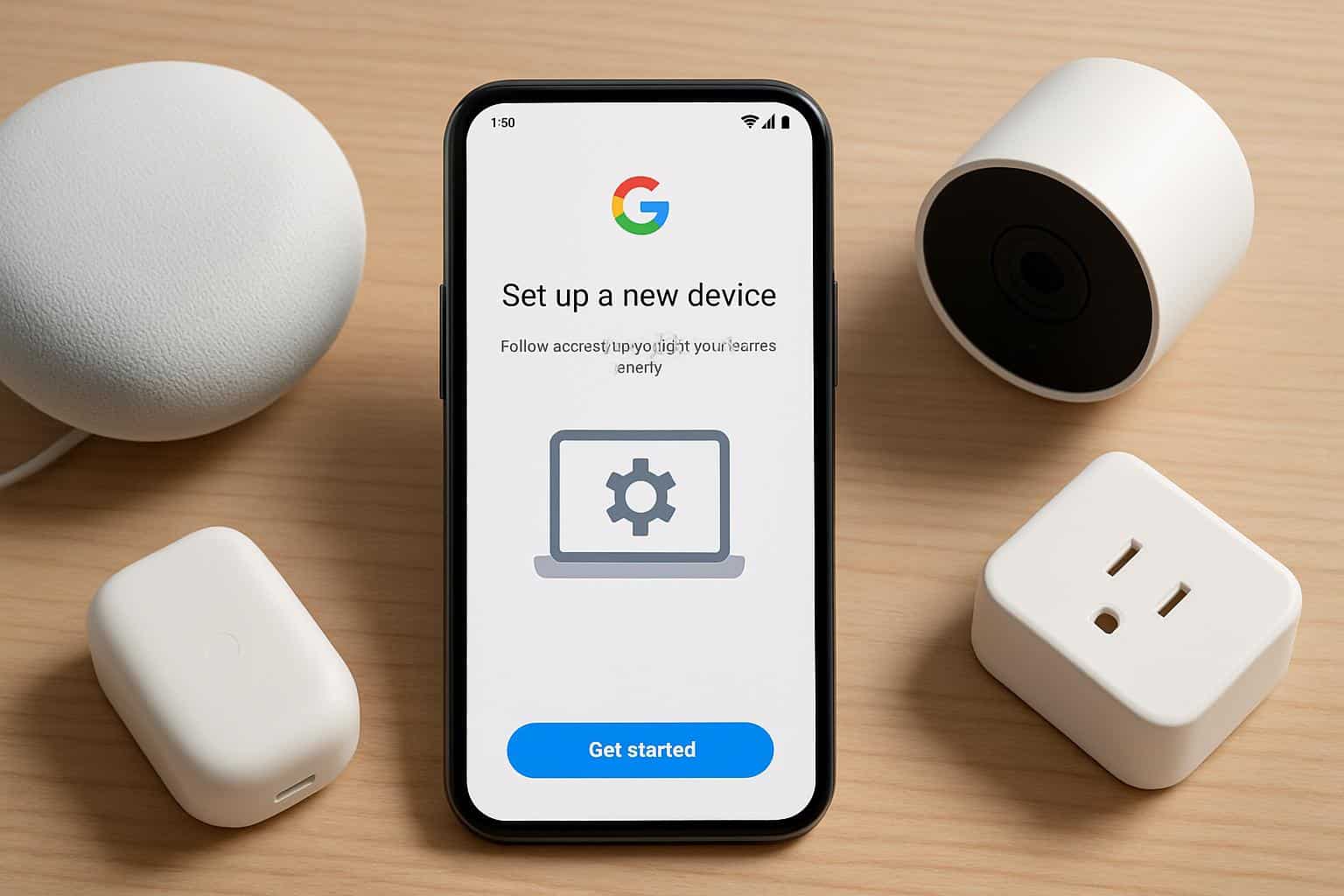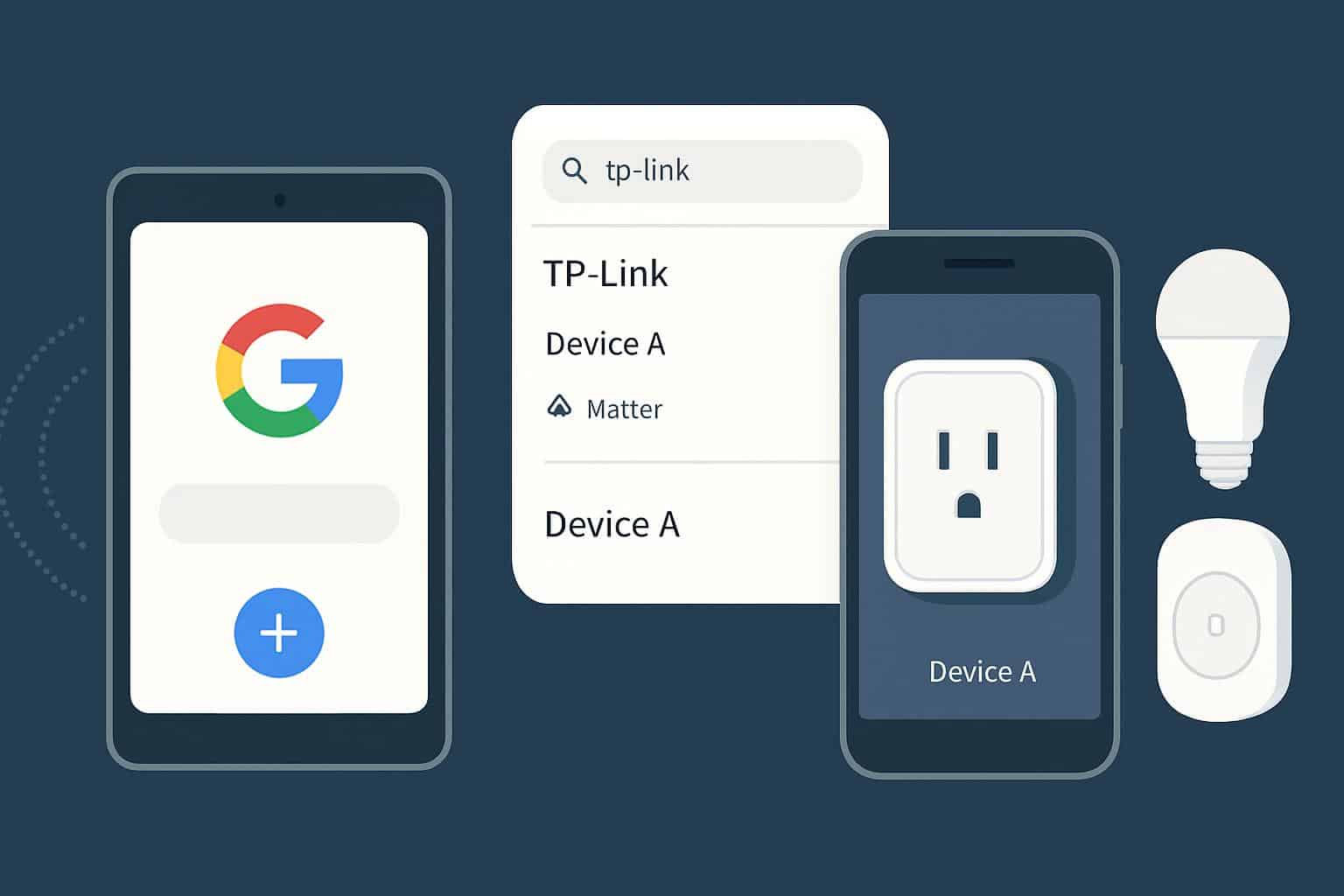Google is working on a new setup process in the Home app that would create a clean, search-driven experience instead of having to skulk around for QR codes and pass through automated discovery. Early access builds of the app feature a “find alternate methods” route that allows you to search by brand or specific device model, delve into whether it actually supports Matter and verify you’ve chosen the correct product with a photo.
How the Google Home setup flow is changing in preview
In the current preview builds of the Home app, when you’re using the QR scanner screen, you’ll find an extra button next to that hidden one that pops up a searchable catalog. Type in a brand, like Philips Hue, TP-Link or Ecobee and you will get back not only the companion app but also a list of all the individual products. Select the specific model and the app walks you through what is required, flashing up a product image to avoid guesswork.
- How the Google Home setup flow is changing in preview
- Taking The Search First Setup Approach — Why It Works
- Matter support is front and center in the new interface
- How this ties to the new Gemini-powered Google Home
- How Google Home’s new setup approach compares with rivals
- Availability in previews and what users should expect

This isn’t replacing the existing options — QR codes and proximity-based detection are still around. It’s an additional avenue for when a device refuses to broadcast itself, the QR label is hidden behind a mount, or perhaps you’d rather select from a list than wait for discovery to do its thing.
Taking The Search First Setup Approach — Why It Works
Smart home onboarding typically breaks at the first tap. Detection might time out, networks might be finicky and not every household has packaging at the ready for QR labels. A catalog search lowers that friction by reducing cognitive load: Find the product by name, verify visually, select the corresponding playbook.
It also meets its newbie users where they are. Instead of tinkering with radio broadcasts or peering at codes in the dark, the app provides a clear “you pick it, we’ll walk you through it” route. That’s a flow user experience researchers have advocated for the onboarding of complex devices for years, in part to avoid dead-ends and support escalations.
Matter support is front and center in the new interface
Every entry in the new interface is flagged as to whether a device is Matter enabled. It matters because the setup paths part ways if a product can pair over the universal standard compared to a cloud-to-cloud link. A clear “Matter” badge on the front makes it easy for households to determine whether to opt for local pairing, or do so through a manufacturer account, and streamlines multi-platform planning for homes that are also using Apple Home or SmartThings.

The Connectivity Standards Alliance has been building out Matter for additional categories, including lighting and plugs all the way through media, HVAC and appliances. The larger the catalog, the more important it becomes to make that compatibility information available at setup and not just as a courtesy.
How this ties to the new Gemini-powered Google Home
This workflow comes alongside a larger Home app redesign that delivers Google’s Gemini-powered recommendations directly into the interface. And though setup mostly represents a UI change here for now, the potential pay-off down the line is obvious: interstitial guidance which can recommend what brand of integration you should use, fish out a more relevant instruction set and tweak instructions to your network’s specific needs/your existing devices’ limitations without forcing users to scroll through generic help screens.
How Google Home’s new setup approach compares with rivals
Apple Home relies on pairing codes and manufacturer apps, while SmartThings has long supported a brand and category picker. Alexa from Amazon gains Frustration-Free Setup for a variety of hardware that comes pre-registered to your account. Google’s new approach combines the best of both of these playbooks: Next, keep QR and auto-detection for speed, but then backstop them with a searchable catalog that is visual to reduce ambiguity and honor the increasing importance of Matter.
Availability in previews and what users should expect
It’s popping up in recent preview builds of the Home app and seems to be server-side gated, so most users won’t see it just yet. When it jibes, expect to see it alongside the current flows. That’s smart: The quickest solution is still scanning a QR code from the back of your new smart plug, but for older gear or edge cases, searching by brand and model is probably the most reliable way to go.
Google’s reward is more setups that aren’t delayed and clearer cross-platform understanding. For households, it’s easy: less fiddling, more finishing. If the company follows its usual cadence, the search-based configuration will expand from testing by a few to broader availability once telemetry proves out that it does indeed cut down on setup time and retries. For now, it’s a tantalizing glimpse at a smarter, more forgiving onboarding process in Google Home.

